Photos: These beautiful, desolate Greenland fjords are being polluted by an abandoned US army base
These stunning fjords carved into the southeastern coast of Greenland are dotted with snow—and decorated with piles of auburn oil barrels that have been laying there ever since the US Army abandoned a military base in the area in 1947.
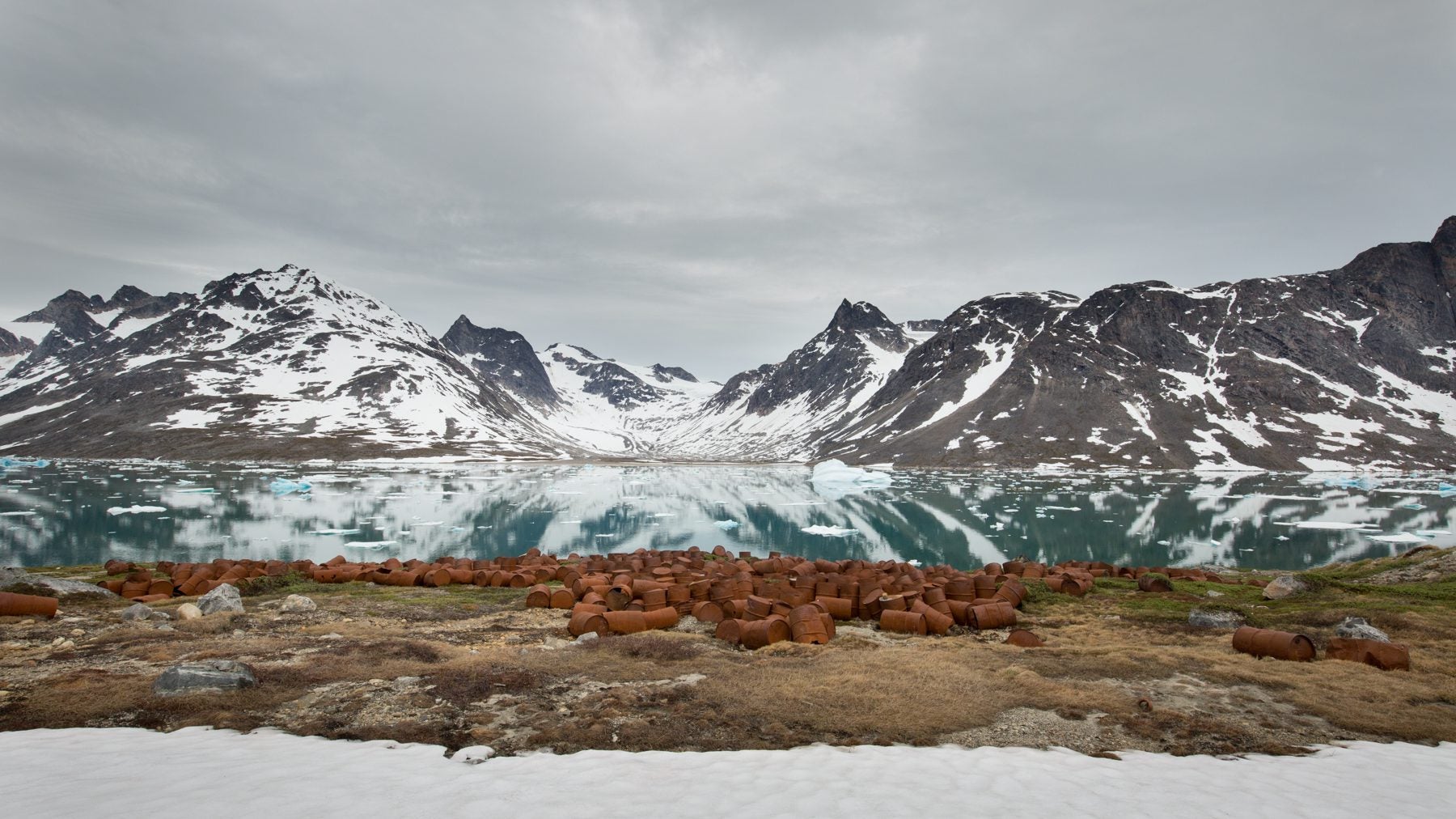

These stunning fjords carved into the southeastern coast of Greenland are dotted with snow—and decorated with piles of auburn oil barrels that have been laying there ever since the US Army abandoned a military base in the area in 1947.
The US Army air corps ran the Bluie East Two air base during World War II. Aircraft could land on a 5,000-foot long gravel runway and refuel on the base, located near the present-day village of Ikateq in Greenland. There was also a weather station providing forecasts to US military personnel operating in the Arctic.
New York photographer Ken Bower visited the site in 2014 and 2015 to photograph the degradation. The resulting photo series, “American Flowers,” depicts a grim picture of military pollution in one of the most remote corners of the world. Bower titled the series using the nickname local Inuits gave the former American airbase.
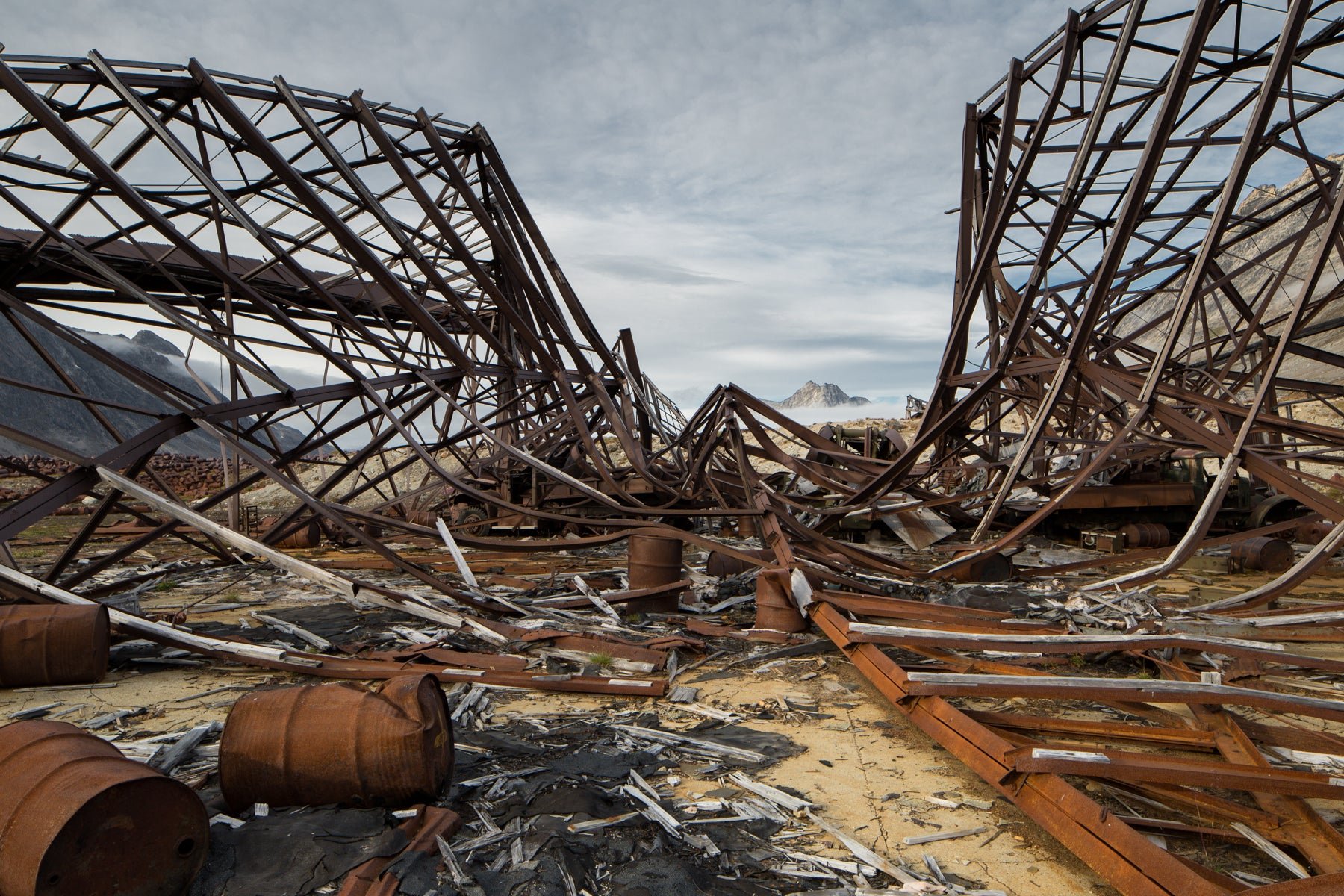
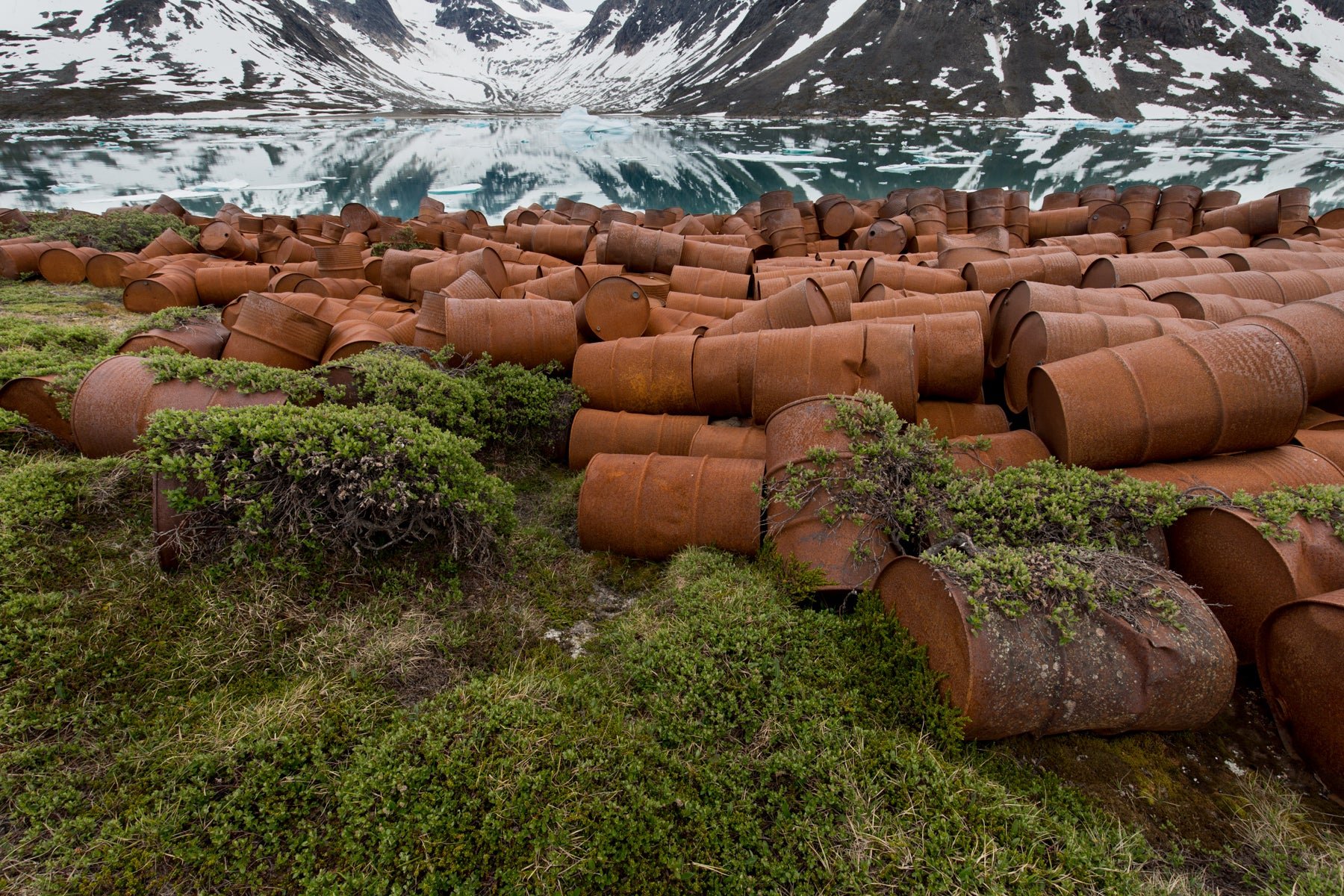
“It was really erie because it is such a beautiful landscape,” says Bower. “Greenland is absolutely pristine, and you just have all these rusted elements basically rotting in a pristine environment.” The massive piles of barrels are still filled with fuel and the dozens of collapsed wooden buildings in the area have roof shingles made with asbestos.
Bluie East Two was established by the US Army air corps under the 1941 Agreement Relating to the Defense of Greenland, which made the US the responsible for the defense of the island after Denmark fell into the hands of Nazi Germany.
A few years later in 1947, the air corps left the site, leaving behind them leaking fuel, rusting heavy metals, trucks, carcinogenic materials, and possibly 700 cases of undetonated dynamite. That last item is according to an article written by Bob Baxter, a man who claims he was a radio operator at Bluie East Two. Baxter even posted black and white photographs of himself standing next to a shed filled with dynamite that he was tasked to detonate. In his post, Baxter said some of that dynamite was also left behind by departing US troops.
Bower’s photography has renewed public awareness about the dozens of abandoned US military bases in Greenland that are still waiting to be cleaned up. Danish and Greenland ministers of environment visited Bluie East 2 on Aug. 20 (link in Danish), and Danish minister Lunde Larsen commented that “Greenland should not be the world’s dustbin.” It remains unclear who should be in charge of any clean up, however.
Inuuteq Holm Olsen, head of the Greenland representation in Washington, D.C., notes that even though Bower’s photographs have rekindled public discussion, a clause in the 1953 Greenland Defense Agreement may enable the US to avoid responsibility. The clause states that any material or equipment brought to Greenland by the US may be “disposed of in Greenland” and ”any areas or facilities made available to the Government of the United States of America under this Agreement need not be left in the condition in which they were at the time they were thus made available.”
“It’s been an ongoing case for many years, where we have tried to address these issues to those who are responsible, be it Denmark who commissioned, or the Americans who established the base and left them,” says Holm. “It’s like speaking to a wall.”
Ken Bower is collecting signatures for an online petition calling on the US government to clean up the air base. More photographs related to this project can be found on his Instagram @kenbowerphoto.


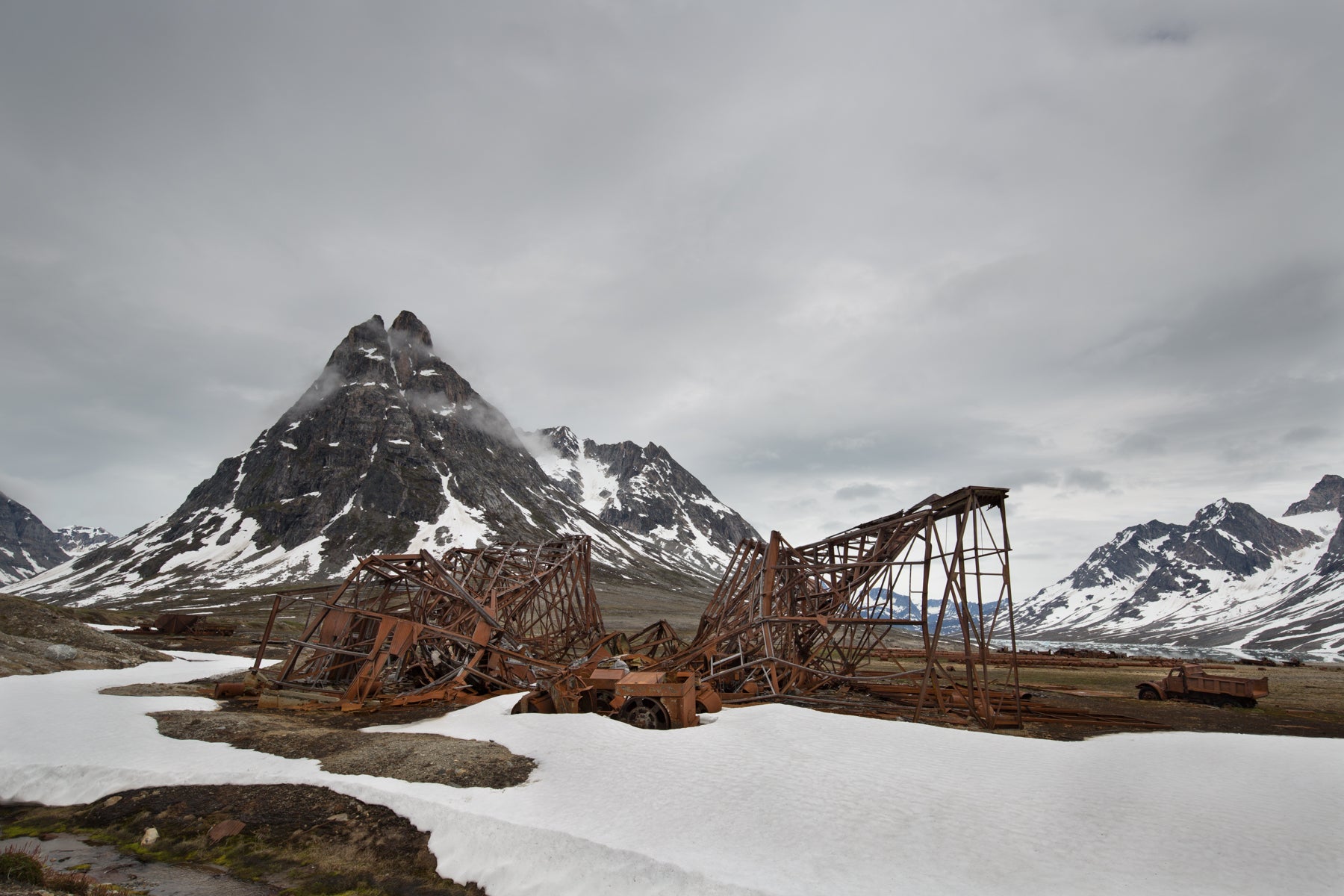
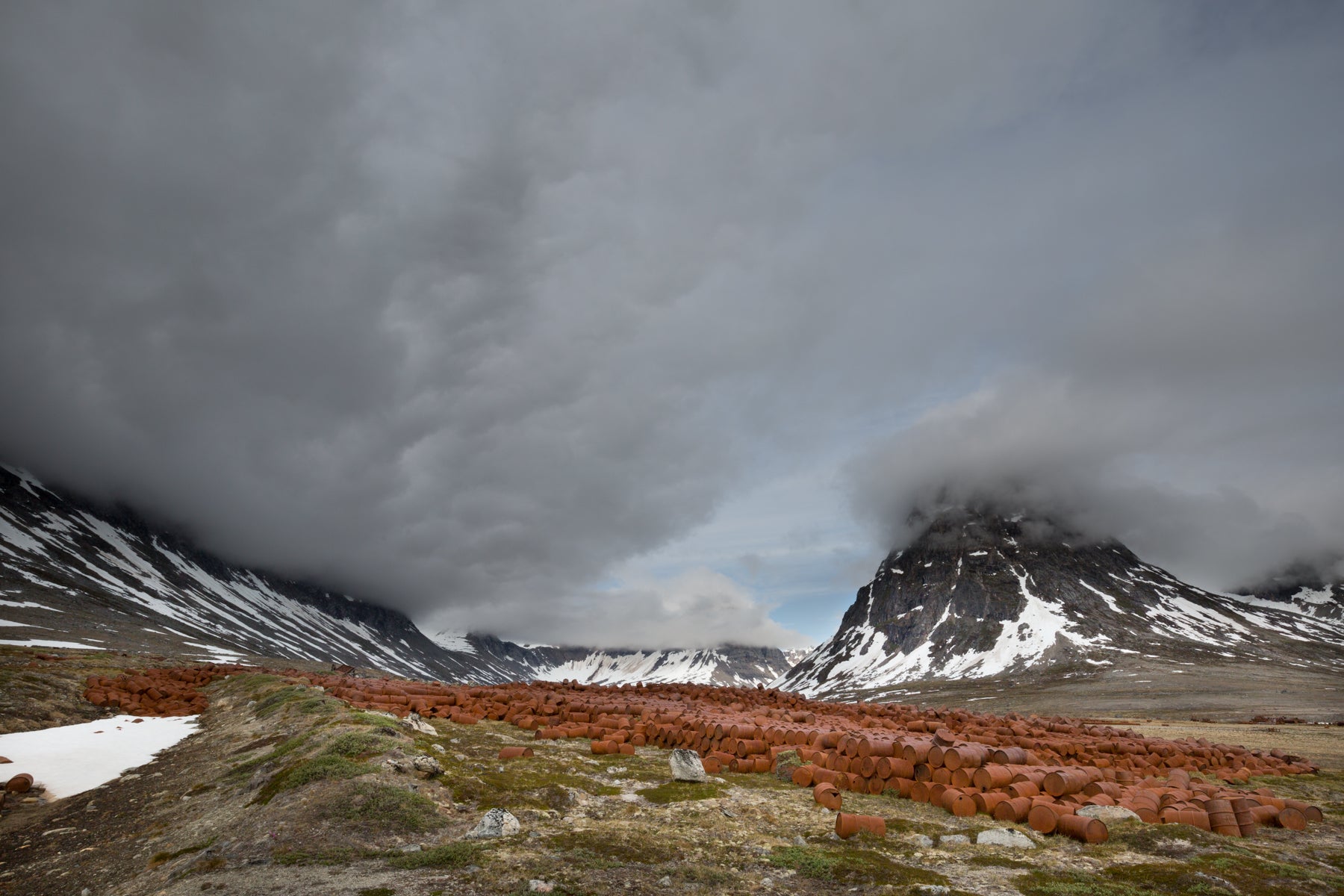
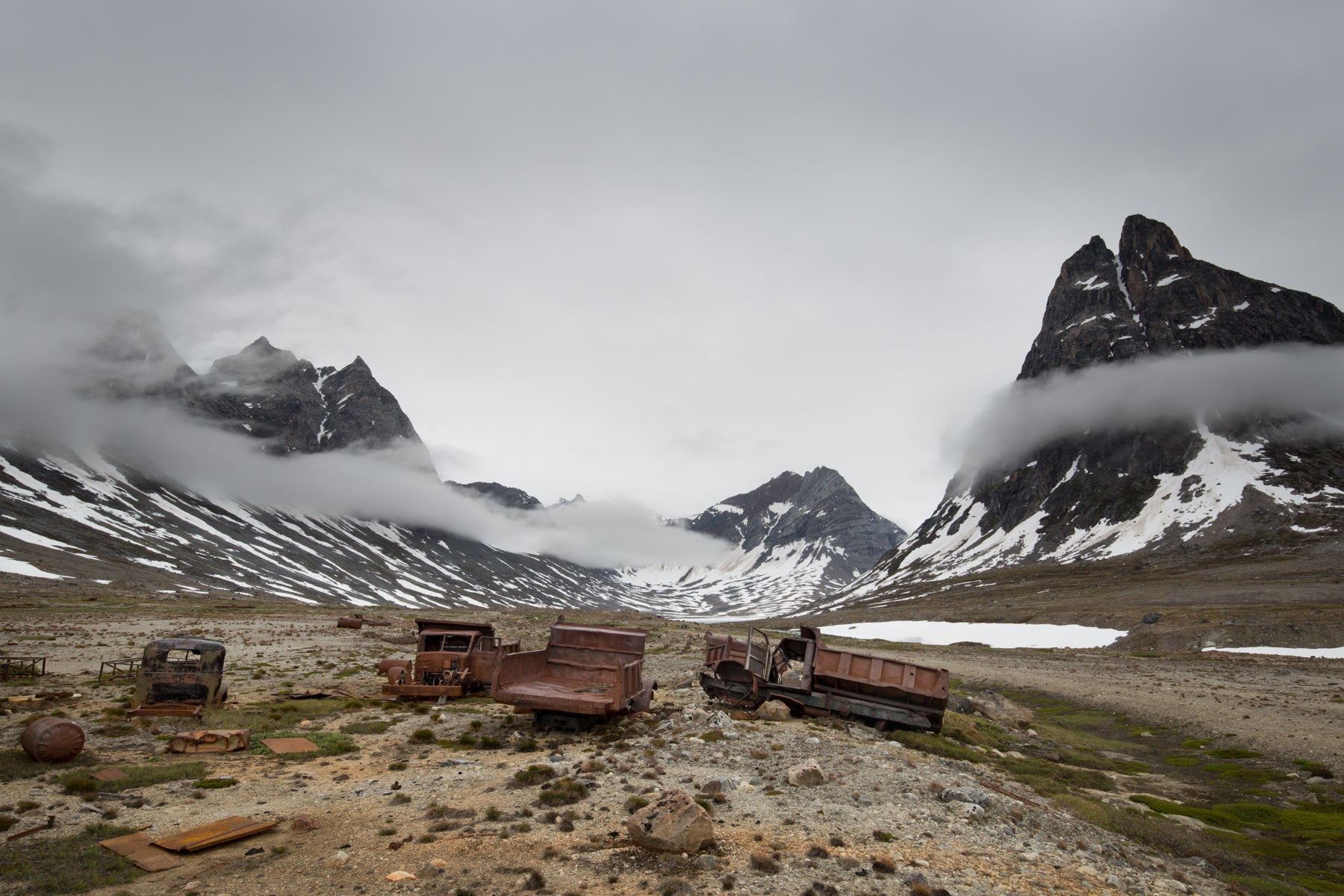
Correction: A previous version of this post implied that the barrels were made of copper metal when in fact they are copper in color. The post has also been corrected to note that Greenland is an island.